Olympic mascots through the ages: A journey from 1972 to 2024
Sign up now: Get the biggest sports news in your inbox
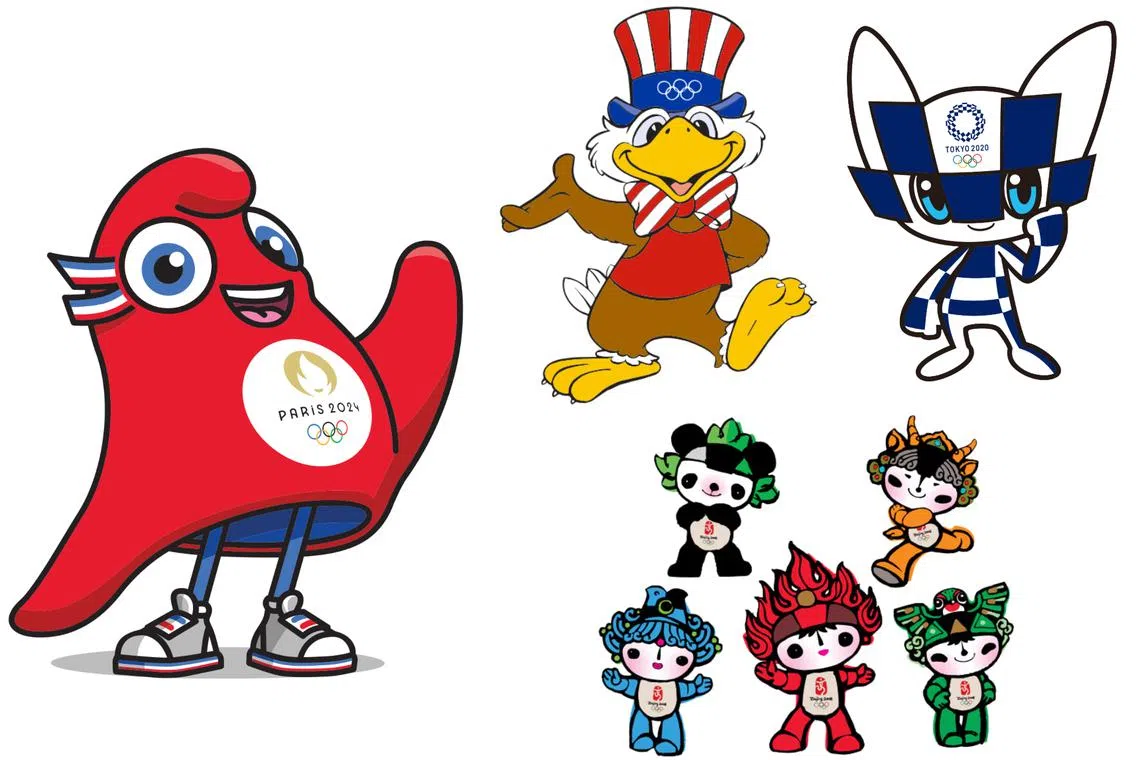
Mascots through the years: (clockwise from left) Paris 2024, Los Angeles 1984, Tokyo 2020 and Beijing 2008.
PHOTOS: OLYMPICS.COM
Follow topic:
Olympic mascots are symbolic figures representing the host country and its culture, introduced to engage the public and promote the Olympic spirit.
The first official mascot was Waldi, a dachshund, at the 1972 Munich Games. All the subsequent Olympics have featured unique mascots reflecting the host nation’s heritage.
Here’s a look at the different mascots through the years.
Waldi (Munich 1972)
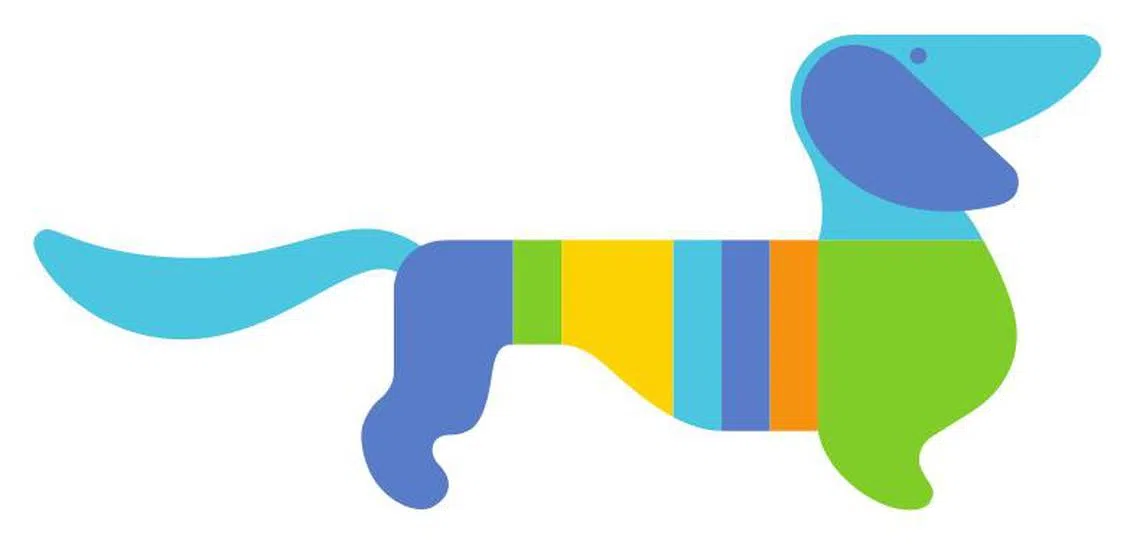
Munich 1972 – Waldi
PHOTO: OLYMPICS.COM
• Waldi was the first official Olympic mascot. A dachshund, chosen for its qualities of resistance, tenacity and agility, which are attributes required for athletes.
• Created by Elena Winschermann.
• Waldi’s design was inspired by a real dachshund named Cherie von Birkenhof.
Amik (Montreal 1976)
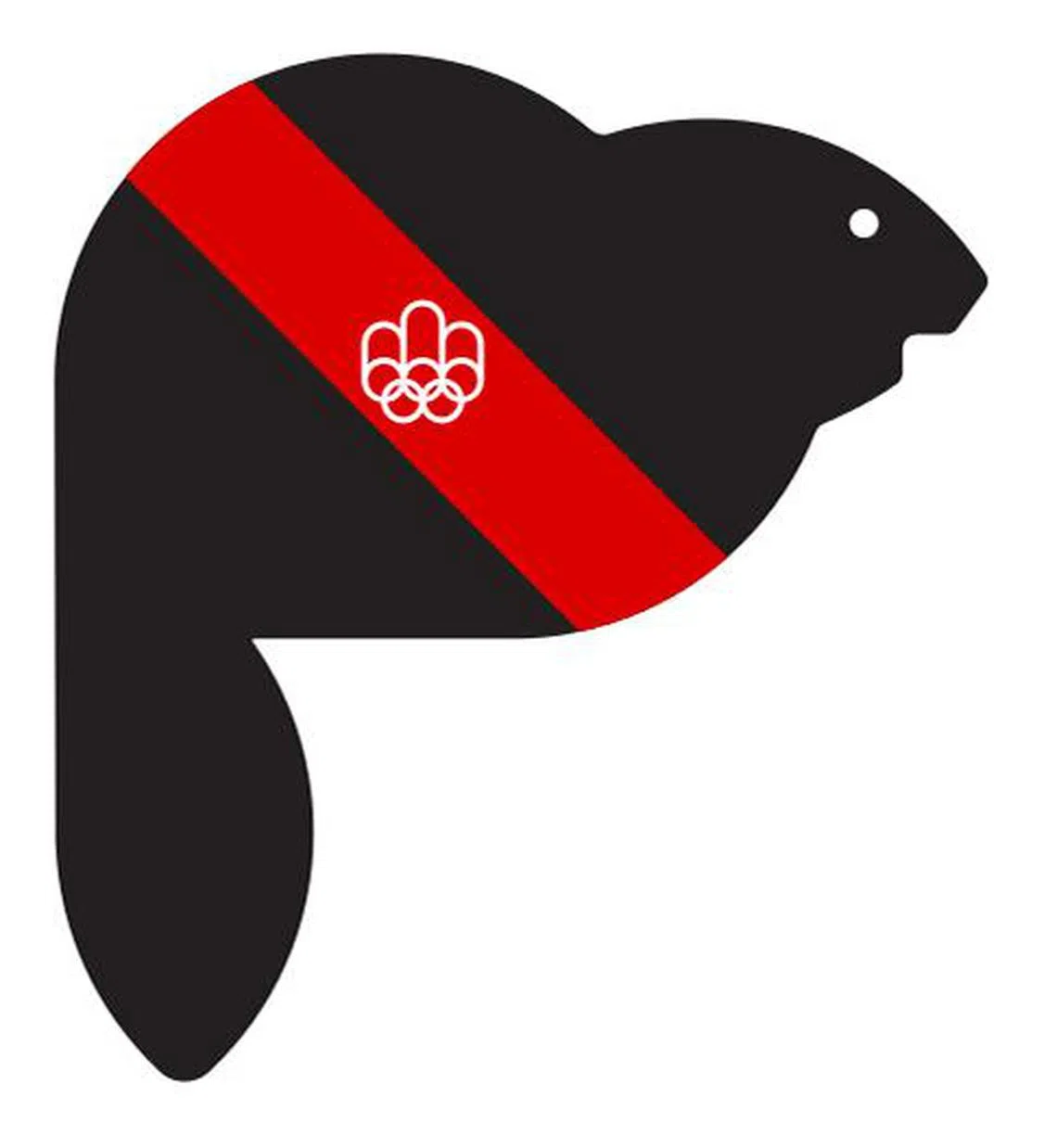
Montreal 1976 – Amik
PHOTO: OLYMPICS.COM
• Amik is a beaver, symbolising hard work. It is an animal considered a national symbol of Canada. The word “amik” means “beaver” in the Algonquian language.
• Created by Guy St-Arnaud, Yvon Laroche and Pierre-Yves Pelletier, under the leadership of Georges Huel.
• Amik’s simple design with a red sash drew mixed reactions, leading to varying interpretations of its appearance.
Misha (Moscow 1980)
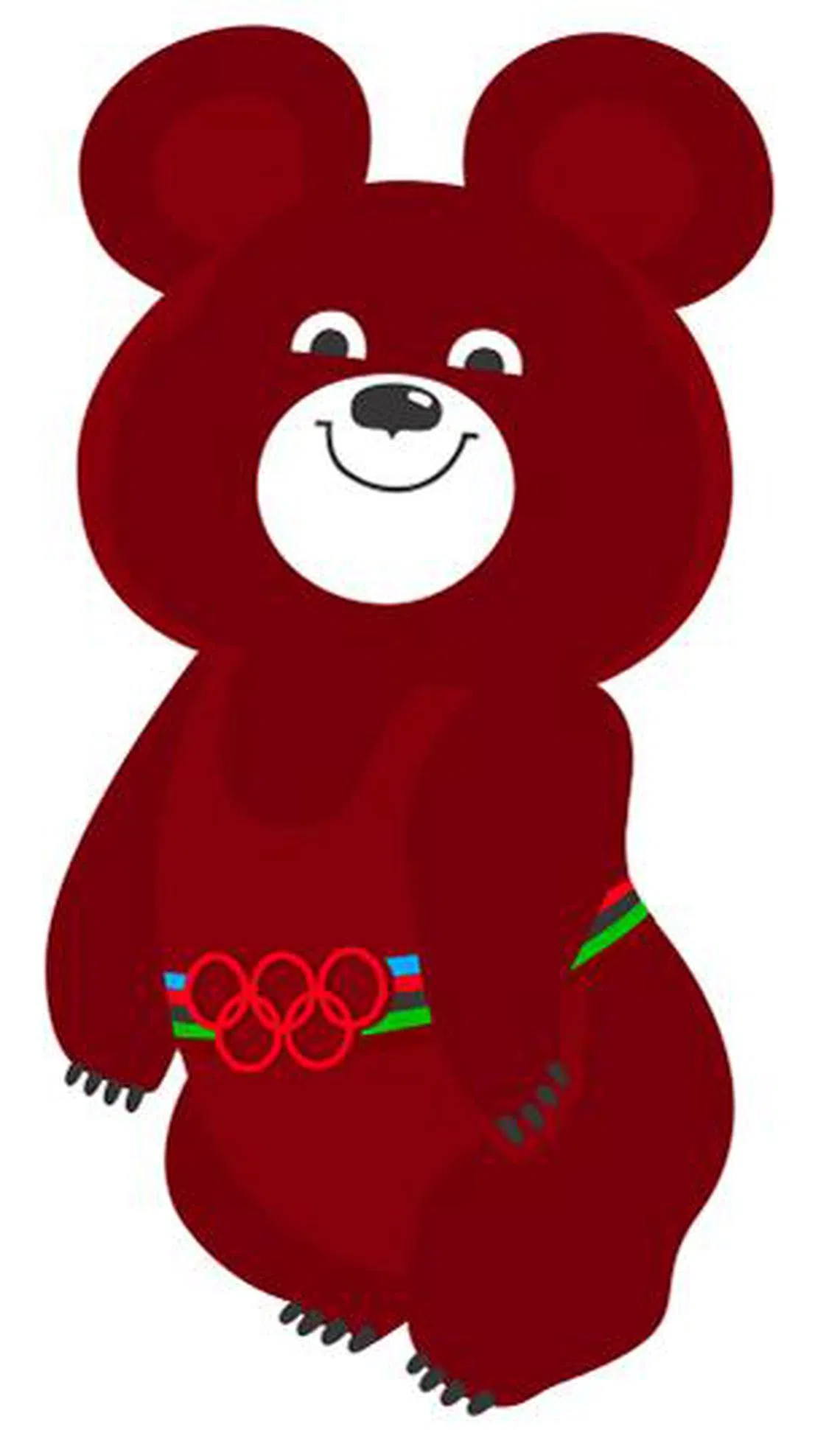
Moscow 1980 – Misha
PHOTO: OLYMPICS.COM
• Misha, a bear character associated with Russia and the Olympic Games, wears a belt with a unique design featuring the Olympic rings.
• Created by Victor Chizhikov.
• Misha’s departure in the closing ceremony, shown as a tearful farewell, became an iconic and emotional moment.
Sam (Los Angeles 1984)
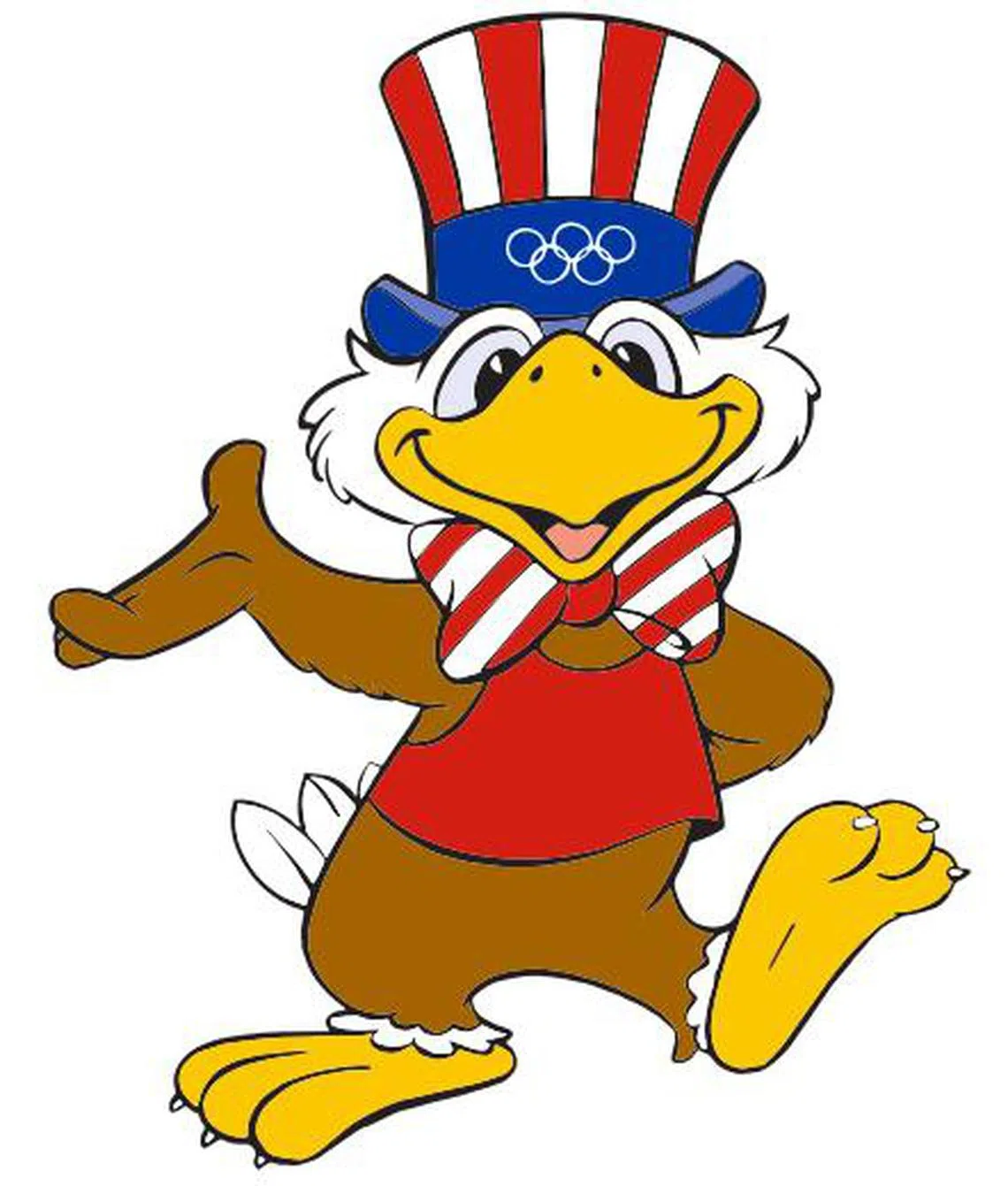
Los Angeles 1984 – Sam
PHOTO: OLYMPICS.COM
• Friendly, cheerful eagle embodying Olympic spirit, wearing a hat with the colours of the US flag.
• Sam is an anthropomorphic bald eagle, dressed as Uncle Sam, representing American patriotism.
• Created by C. Robert Moore, Walt Disney Productions.
• Sam also paid homage to the ancient Olympic Games and was featured in a cartoon.
Hodori (Seoul 1988)
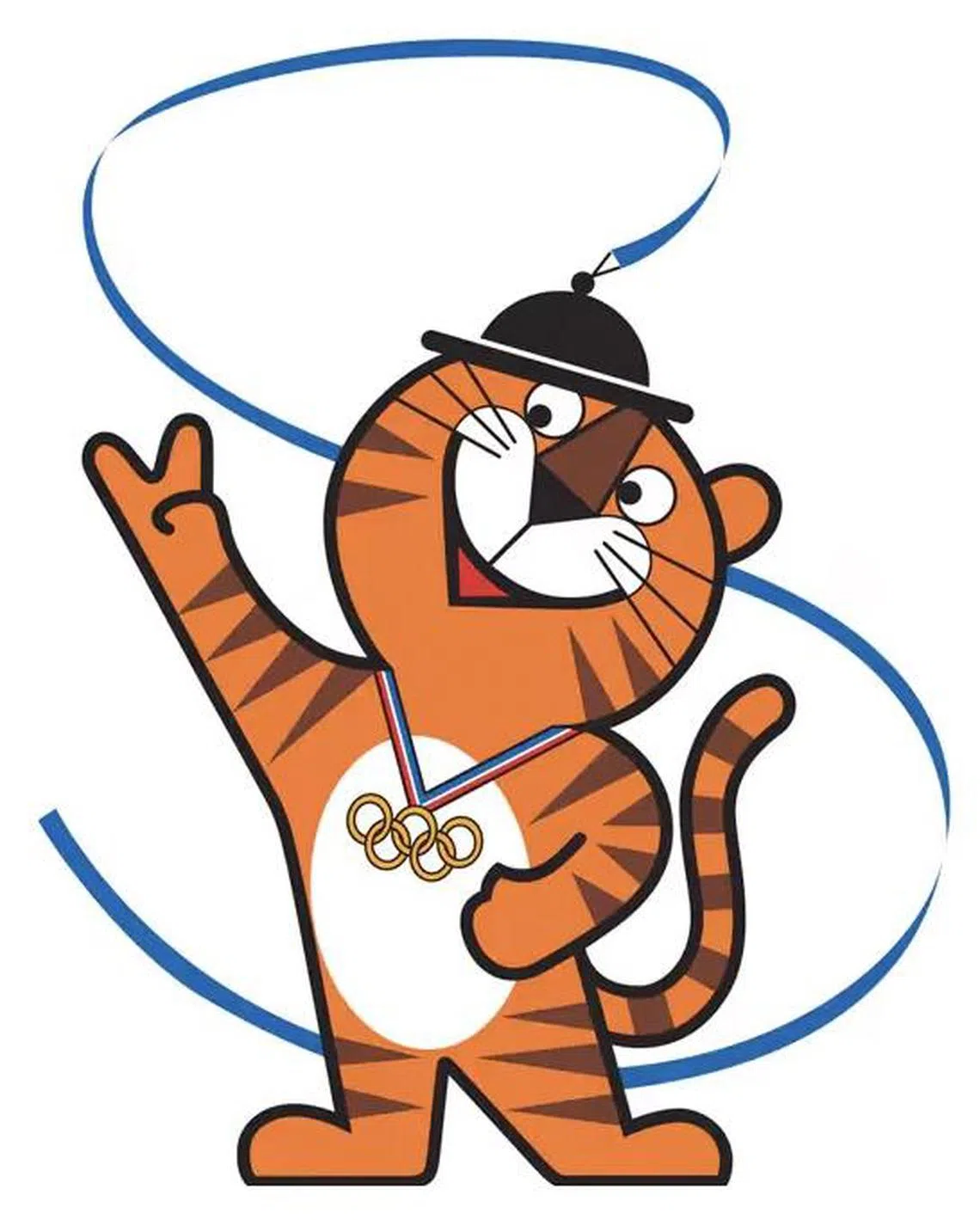
Seoul 1988 – Hodori
PHOTO: OLYMPICS.COM
• Hodori is a friendly tiger, symbolising South Korean hospitality.
• Created by Kim Hyun.
• Hodori’s name is derived from “Ho”, meaning tiger in Korean, and “Dori”, a diminutive for boys in South Korea.
Cobi (Barcelona 1992)
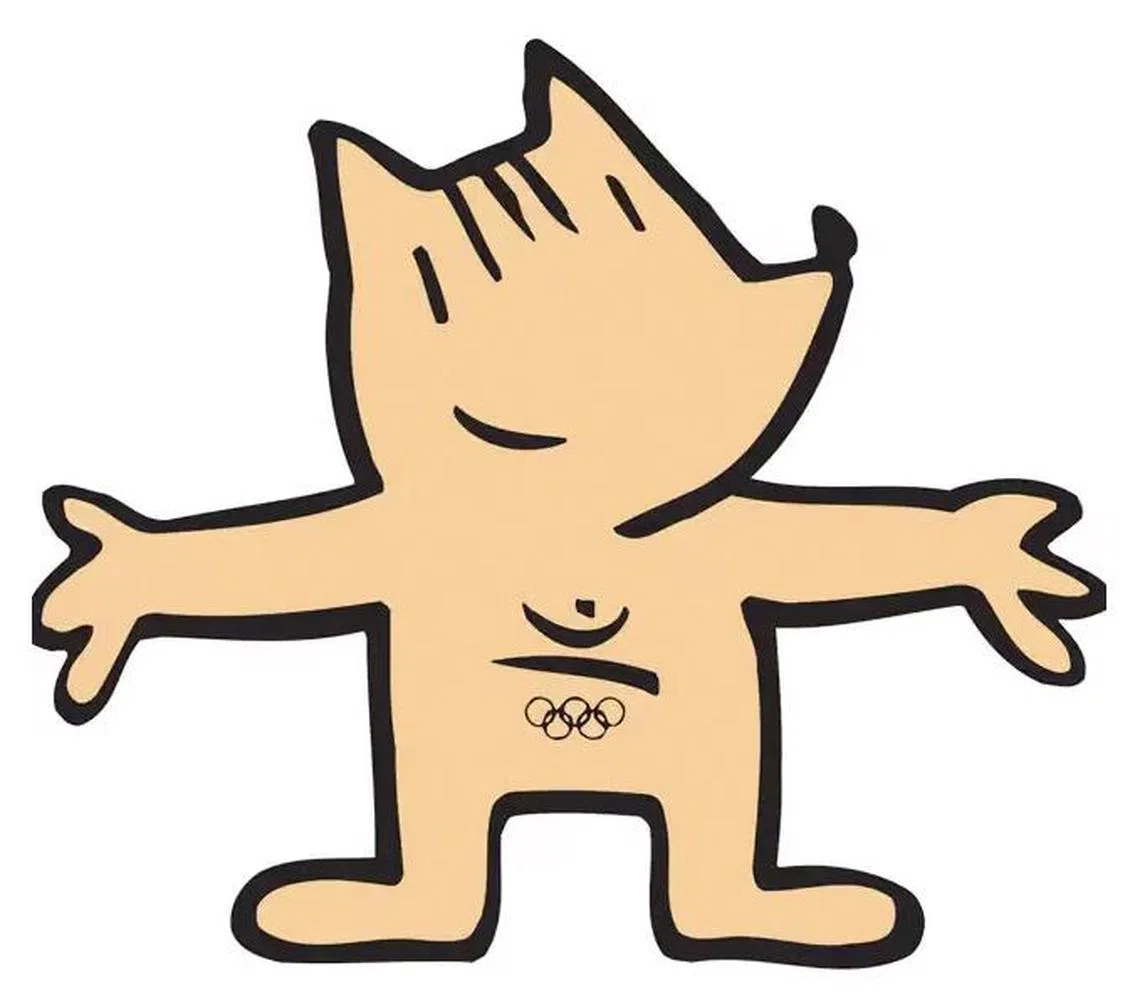
Barcelona 1992-Cobi
PHOTO: OLYMPICS.COM
• Cobi is a humanised Pyrenean mountain dog depicted in a cubist style.
• Created by Javier Mariscal.
• Initially controversial for its abstract design, Cobi became very popular and commercially successful.
Izzy (Atlanta 1996)
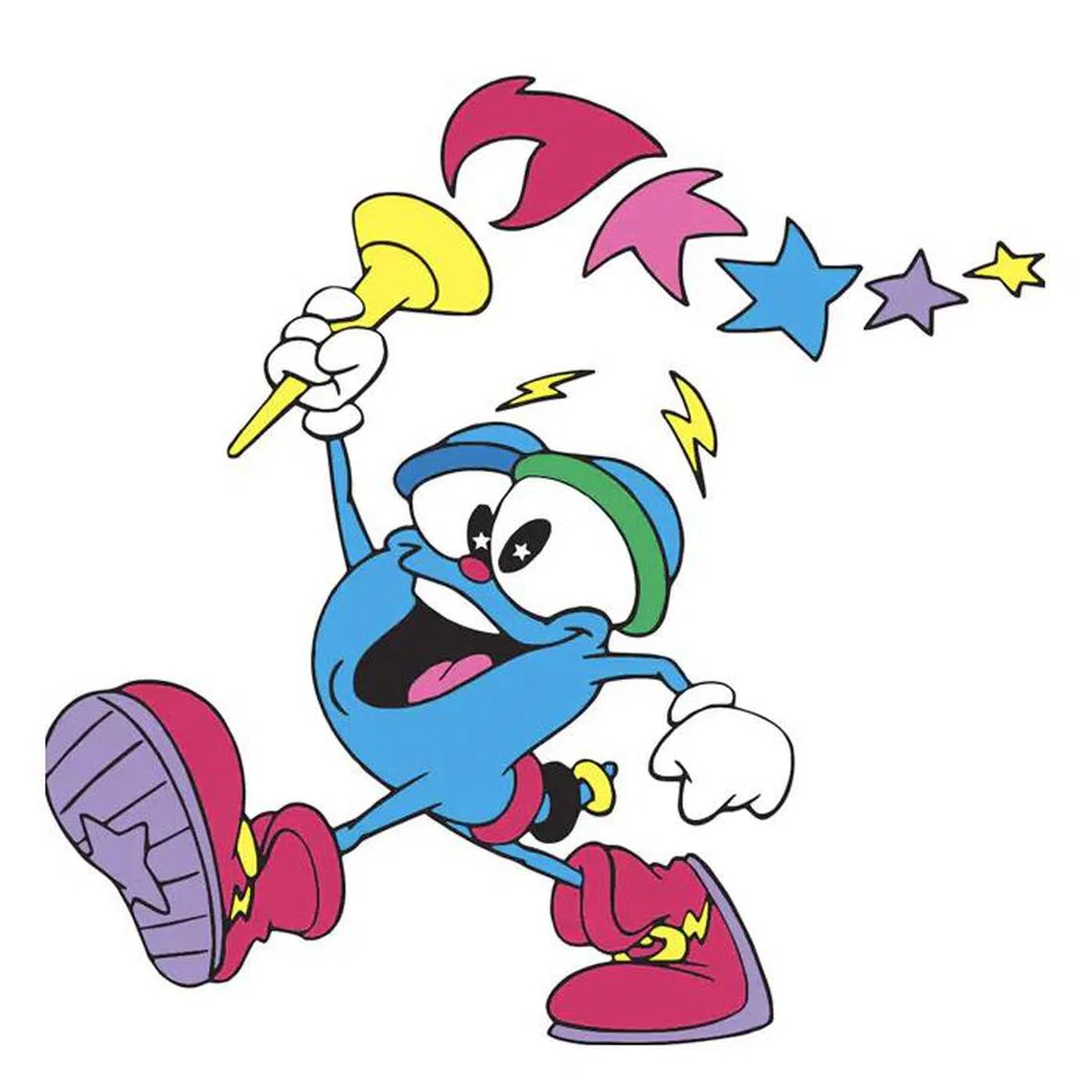
Atlanta 1996-izzy
PHOTO: OLYMPICS.COM
• Izzy is an abstract character, a computer-generated figure symbolising the future. The blue character has training shoes and five Olympic rings on its body.
• Created by John Ryan, DESIGNefx.
• Izzy, initially called “Whatizit” (later “Whatizhee”), faced criticism for its ambiguous form and underwent several redesigns.
Syd, Olly and Millie (Sydney 2000)
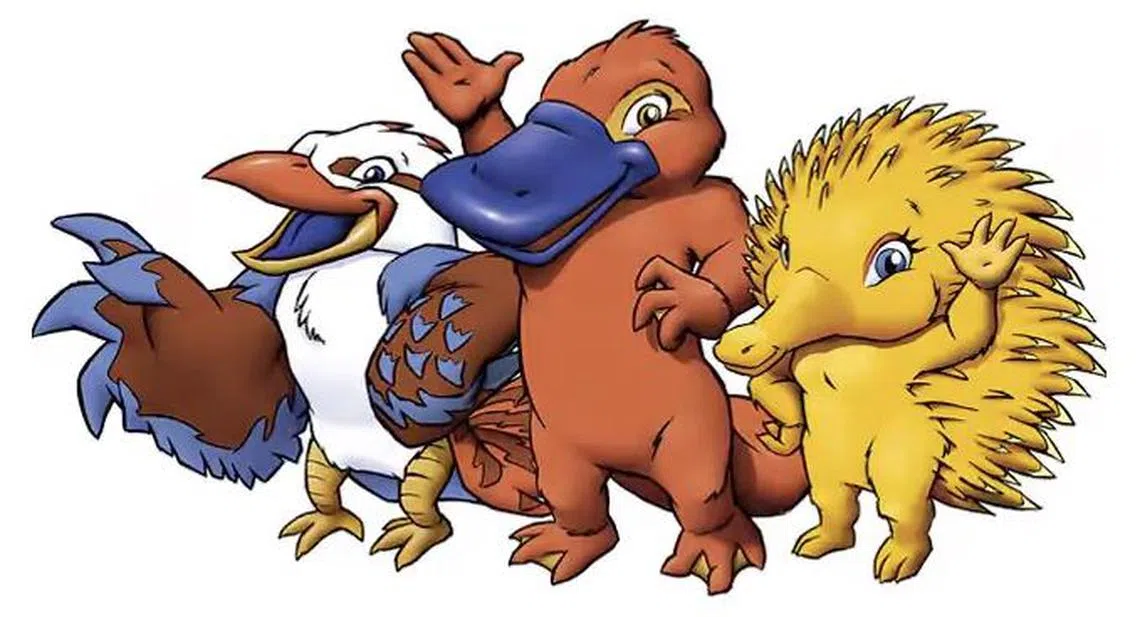
Sydney 2000
PHOTO: OLYMPICS.COM
• Syd, a platypus, Olly, a kookaburra, and Millie, an echidna, represent Australia’s environment and heritage.
• Created by Matthew Hatton.
• Syd is a reference to Sydney, Olly to Olympics and Millie to the new millennium.
Phevos and Athena (Athens 2004)
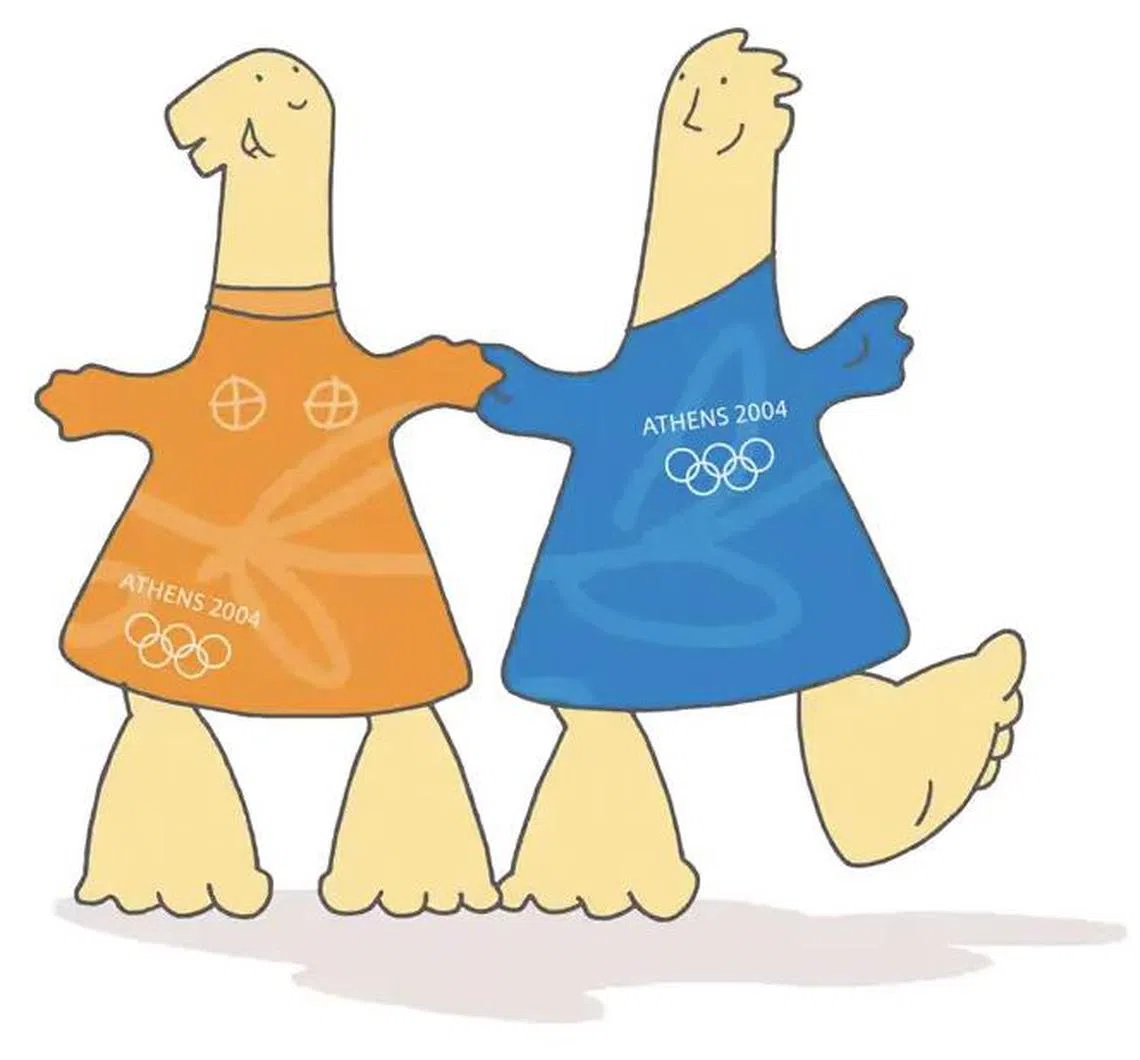
Athens 2004
PHOTO: OLYMPICS.COM
• Sibling dolls inspired by ancient Greek toys, symbolising the connection between the ancient and modern Games.
• Created by Spiros Gogos, Paragraph Design.
• Their names come from Apollo (also called Phevos), the Greek god of light and music, and Athena, the Greek goddess of wisdom and protector of Athens.
The Fuwa (Beijing 2008)
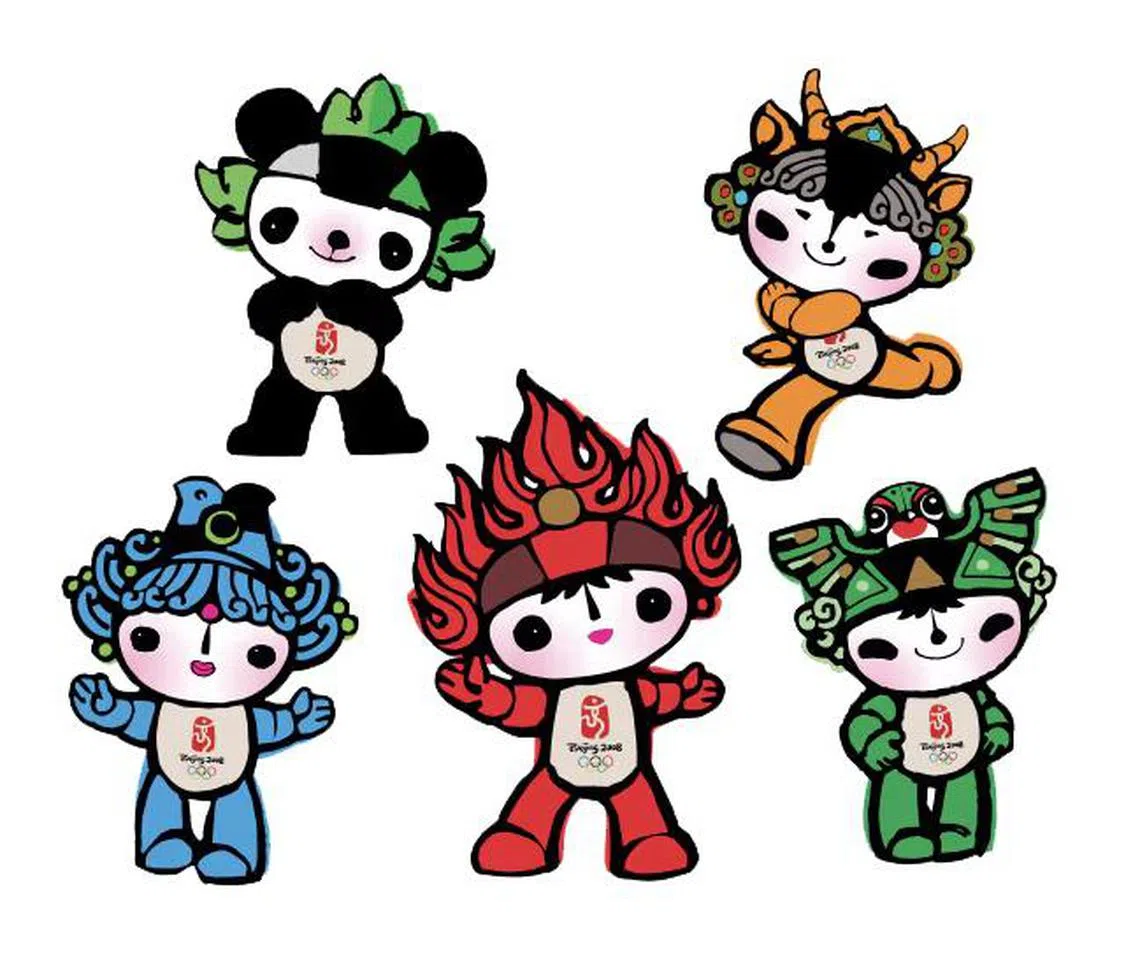
Beijing 2008
PHOTO: OLYMPICS.COM
• Beibei, Jingjing, Huanhuan, Yingying and Nini. The mascots are collectively known as the “Fuwa”, meaning “good-luck dolls”.
• The five mascots each represent a different colour of the Olympic rings and a Chinese symbol: fish, panda, fire, Tibetan antelope, and swallow.
• Created by Han Meilin.
• The names of the mascots form the phrase “Bei Jing Huan Ying Ni”, meaning “Welcome to Beijing”.
Wenlock (London 2012)
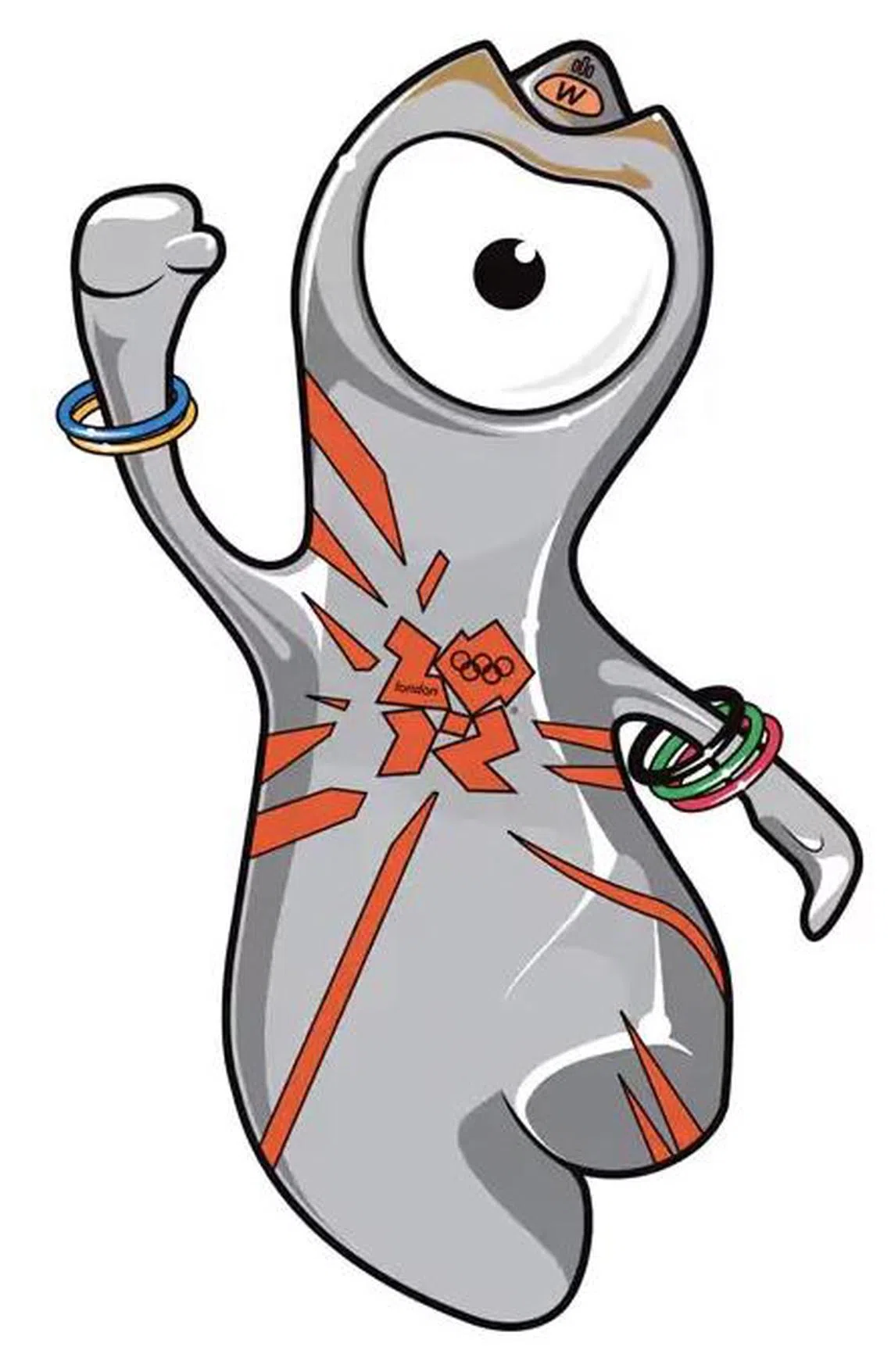
London 2012 – Wenlock
PHOTO: OLYMPICS.COM
• Wenlock’s metallic appearance comes from the last drops of steel used to build London’s Olympic Stadium. His headlight is inspired by London black cabs, his forehead mirrors the stadium roof, his eye is a camera lens, and he wears five Olympic-coloured bracelets. The three points on his head symbolise the podium’s medal positions.
• Created by Iris design agency.
• Wenlock’s name comes from the town of Much Wenlock in Shropshire, which inspired the modern Olympic Games.
Vinicius (Rio 2016)
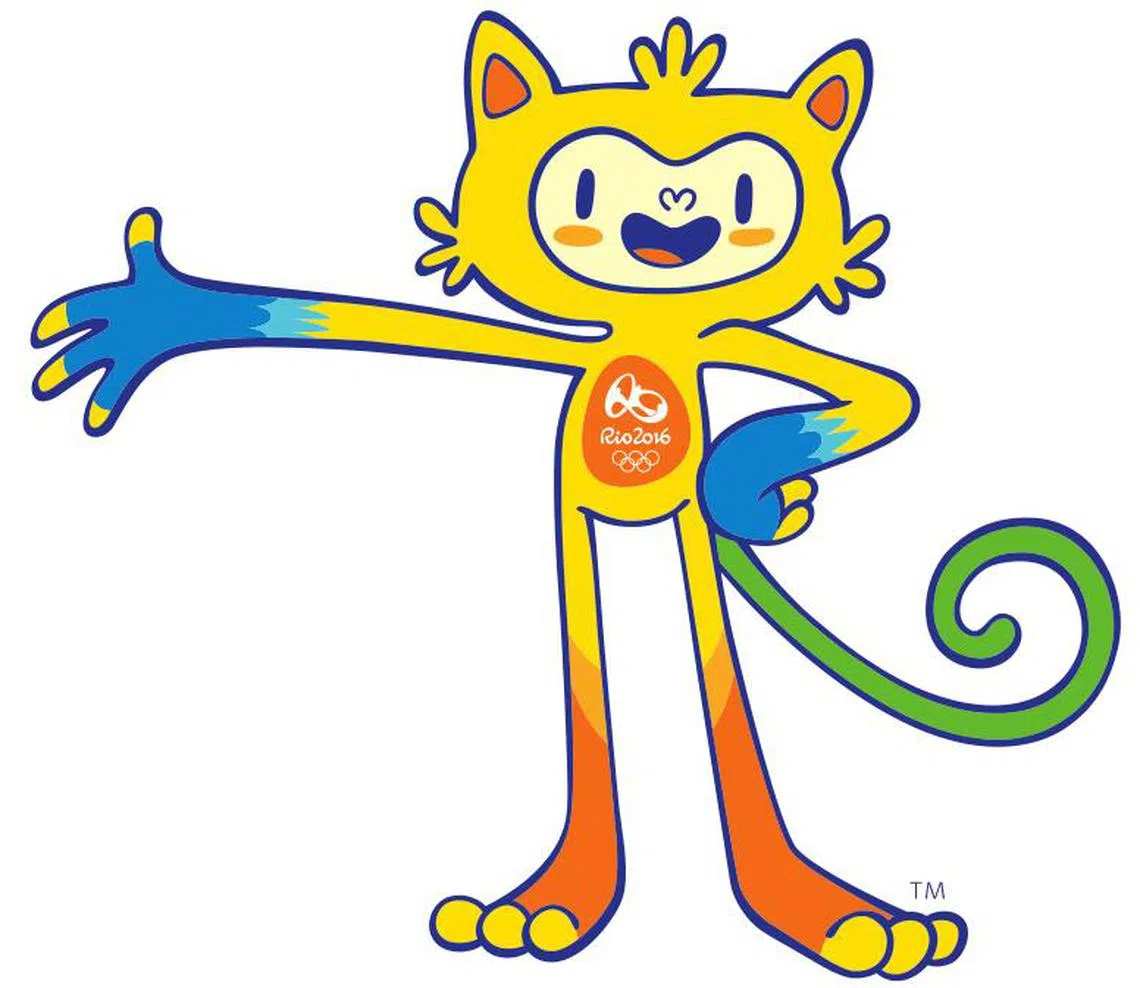
Rio 2016 – Vinicius
PHOTO: OLYMPICS.COM
• Vinicius is a blend of various Brazilian animals, symbolising the diversity of Brazilian people, culture and nature.
• Created by Birdo Producoes.
• Named after the famous Brazilian musician Vinicius de Moraes, who wrote the lyrics for The Girl From Ipanema.
Miraitowa (Tokyo 2020)
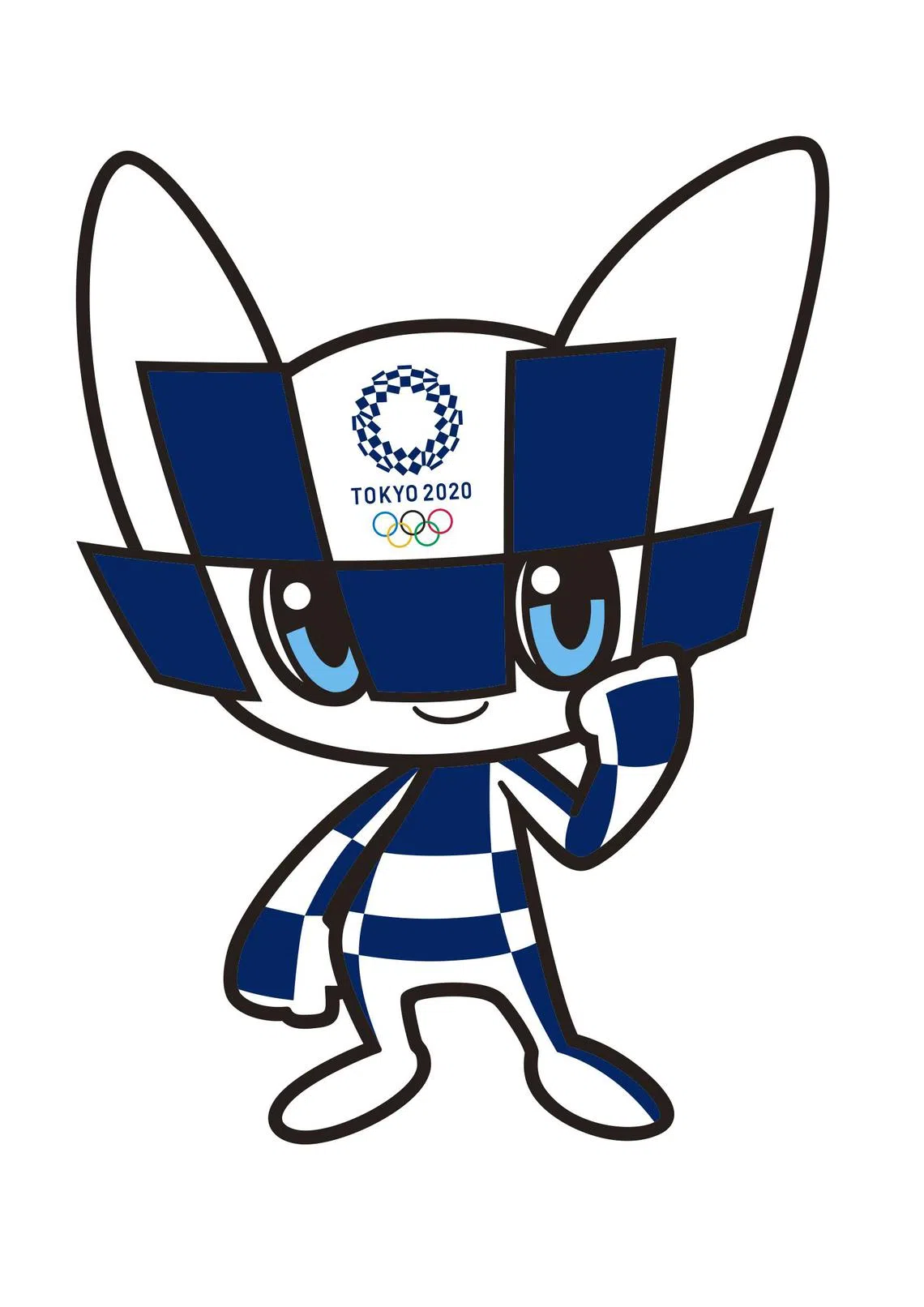
Tokyo 2020 mascot
PHOTO: OLYMPICS.COM
• A character with traditional and futuristic elements, symbolising a fusion of tradition and innovation.
• Created by Ryo Taniguchi.
• The name Miraitowa combines the Japanese words “mirai” (future) and “towa” (eternity). With a blue chequered outfit, the character wears a stylised samurai-style helmet.
• The mascot blends traditional and futuristic styles, symbolising “innovation from harmony”, with its forehead featuring the Tokyo 2020 Games emblem – a chessboard motif of indigo-blue rectangles in three sizes.
Olympic Phryge (Paris 2024)
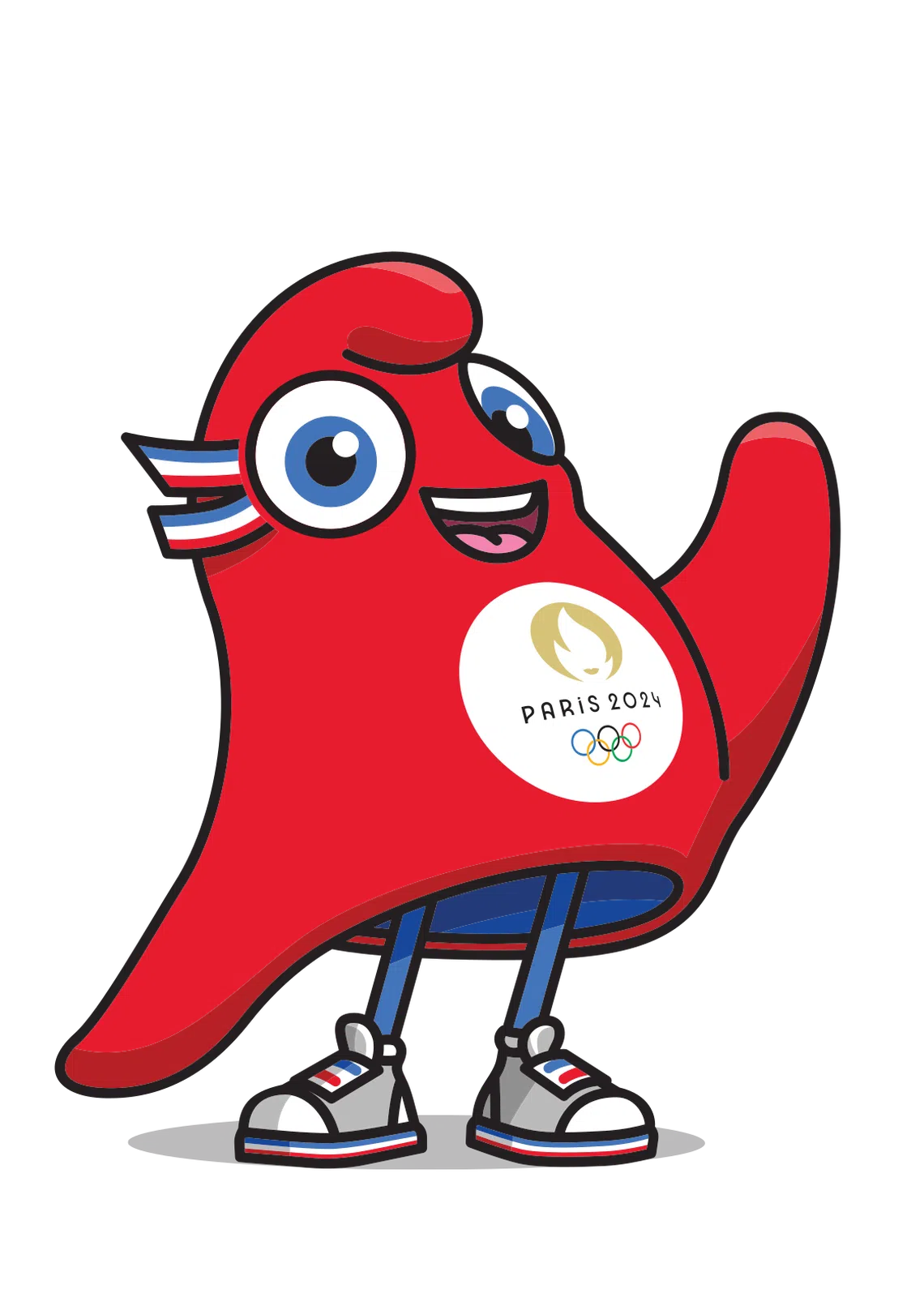
PHOTO: OLYMPICS.COM
• Shaped like a Phrygian cap – a symbol of freedom in French history – Olympic Phryge appears in the French tricolour (blue, white and red).
• Represents the power of sport to change lives and lead a revolution.
• Created by Paris 2024 Design Team.
• Motto is “Alone we go faster, but together we go farther”.
• Phrygian caps are widely recognised symbols in French culture, appearing in art, institutions and everyday objects.
• They also hold international significance as a symbol of liberty, used by freed slaves and on various emblems in North and South America.
What’s the significance of the Olympic mascots?
Cultural representation: Embody host country’s culture, history and values.
Festive atmosphere: Create a fun, celebratory and engaging environment.
Appeal to youth: Connect with children and young people, inspiring future generations.
Marketing: Enhance brand recognition, promote merchandise and generate revenue.
Symbolism: Represent the Olympic spirit, values and ideals (excellence, friendship and respect).
Legacy: Leave a lasting impression, becoming cherished collectibles and cultural symbols.
Educational tool: Teach children about different cultures and the history of the Olympic Games.
Unifying force: Bring people from diverse backgrounds together in a shared experience.
Emotional connection: Evoke positive emotions, creating a sense of excitement and anticipation.
Global ambassadors: Promote the host country and the Olympic movement on the world stage.
Source and illustrations: Olympics.com

